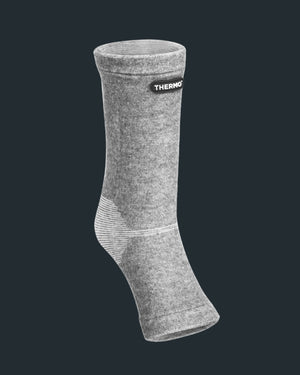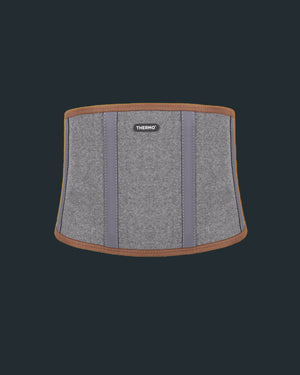Unleash your body's superpower with our comprehensive guide on muscle memory. Learn about its types, health and sport implications, and ways to accelerate it.
Muscle memory represents a fascinating, yet often overlooked, aspect of our physiology. The term denotes the human body's ability to recall specific motor functions, making them second nature.
In this comprehensive review, we shall dissect the concept of muscle memory. From its core definition to its various types and applications, we aim to give you a clearer picture of how it works. Let’s get right into it.
What is Muscle Memory?
Muscle memory is a form of procedural memory that involves consolidating a specific motor task into memory through repetition. It's what allows you to perform movements without conscious effort over time.
The term is often used to describe two different abilities:
- Motor learning, which is your body's way of encoding specific motor actions like riding a bike or playing a piano.
- Strength training, where your muscles grow larger and stronger and then remember this state even after a period of disuse or detraining.
Types of Muscle Memory
Let’s take a closer look at these two muscle memory types we all use every day.
Motor Learning
Muscle memory isn't confined to gym-goers and athletes. It's also heavily ingrained in our most basic, everyday movements.
Motor learning, a type of muscle memory, is all about the repetition of specific physical actions until they become automatic. It's the process by which our motor skills are encoded into our memory, enabling us to perform tasks without conscious effort or thought.
Think about the first time you learned how to ride a bike, swim, or even tie your shoelaces. It probably took a lot of focus and effort to get the movements right. But with repeated practice, your body "learned" the motions. Eventually, these tasks became second nature and you can execute them almost automatically, without thinking about the specific steps involved.
This is the magic of motor learning. Our muscular and nervous systems work together, practicing and gradually perfecting the coordination required for the task.
As we repeat the action, our brains create an efficient sequence of commands, which are then sent to the appropriate muscles for execution. Over time, this sequence becomes ingrained, and the action can be performed instinctively.
Strength Training
Ever wondered how your body seems to bounce back faster after a hiatus from the gym? That's strength training muscle memory in action.
Strength training muscle memory, another form of muscle memory, refers to the changes that take place within our muscles when we perform resistance exercises. This type of muscle memory is fascinating because it involves not just the brain, but also the muscle cells themselves.
When you start to lift weights or perform resistance training, your muscles undergo a process of growth and strengthening known as hypertrophy. Each muscle fiber enlarges as it adapts to the increased load, leading to overall muscle mass and growth. Your body is also simultaneously learning the specific motor patterns of these exercises, encoding them into memory.
Now, say you have to take a break from your training for weeks, months, or even years. When you start training again, you might find that regaining your previous strength and muscle size is easier and faster than the initial process of building them. This is where muscle memory truly shines.
During the detraining period, although the size of the muscle fiber nuclei may decrease, the number of nuclei (acquired during the phase of hypertrophy) within the muscle fibers remains the same.
These nuclei, which play a crucial role in protein synthesis and muscle repair, serve as a form of "motor memory" for the muscle. They enable the muscle to bounce back efficiently to its previous state when training is resumed.
Accelerating Muscle Memory
Building muscle memory is a natural process, but there are ways to accelerate it. Whether you're learning a new skill, returning to your fitness routine after a break, or looking to optimize your physical performance, understanding how to enhance muscle memory can significantly boost your progress.
Step 1. Regular Practice
Regular practice is the cornerstone of accelerating muscle memory. When you consistently practice a particular activity or movement, it reinforces the neural pathways associated with that skill. This reinforcement is what enables you to perform the skill without active thought, turning it into an automatic or instinctive action.
Consider learning to play a musical instrument. When you first start, you need to consciously think about where to place your fingers and how to read the musical notes. But after a period of regular practice, these actions become automatic. You can play the notes without having to consciously think about each step, thanks to muscle memory.
The same principle applies to sports. A basketball player practices shooting hoops over and over. With time and repetition, the player's body learns how to adjust for the right angle and power needed to make a shot.
Even when under pressure during a game, the player can execute the perfect shot because of the muscle memory developed through regular practice.
It's important to note that the quality of practice is just as crucial as quantity. Practicing the correct form or technique repeatedly is key to ensuring that the right patterns are being recorded in your muscle memory.
Step 2. Progressive Overloading
Progressive overloading is another effective strategy for accelerating muscle memory, particularly in the context of strength training. This method involves gradually increasing the amount of stress placed on the muscles during exercise, promoting muscle growth and strength gains.
Imagine you've started lifting weights. Initially, your muscles will struggle to handle the new stress. However, with consistent training aided with methods to reduce weightlifting joint pains, your muscles adapt and become more efficient at lifting the current weights. This is a form of muscle memory — your muscles "remember" how to perform the task more efficiently.
But what happens when the task no longer challenges your muscles? To continue enhancing muscle memory, you need to up the ante. Progressive overloading does exactly that. You could increase the amount of weight, do more reps, or reduce your rest time between sets.
For example, if you've been comfortably lifting 20 pounds for ten reps, you might add 5 more pounds or aim for an extra rep in your next workout. This challenges your muscles anew, forcing them to adapt and grow stronger, thereby ingraining this new level of strength into your muscle memory.
In essence, progressive overloading keeps your muscles learning and improving, which bolsters muscle memory over time. Always remember to increase the load gradually and safely to prevent injury.
Step 3. Proper Nutrition
Proper nutrition provides the building blocks for muscle repair, growth, and strength — all of which are essential to accelerating muscle memory. Eating a balanced diet ensures your body gets the necessary nutrients it needs for optimum muscle function and recovery.
When it comes to specific workouts, your nutritional needs might vary. Here are some recommendations:
- Resistance or Strength Training: Higher protein intake is crucial to support muscle repair, recovery, and growth. Consuming a protein-rich meal or shake within an hour after your workout can promote muscle protein synthesis. Foods like lean meats, fish, eggs, dairy products, legumes, and plant-based proteins like tofu and tempeh are great examples.
- Endurance Training: Carbohydrates are your body's primary source of energy for endurance activities like running, cycling, or swimming. Ensuring adequate carb intake not only fuels your workouts but also aids in recovery. Best food recommendations include whole grains, fruits, vegetables, and legumes.
- High-Intensity Interval Training (HIIT): Combining protein and carbohydrates can be beneficial for recovering from these intense workouts. Some examples are a smoothie containing fruits (carbs) and Greek yogurt (protein) for snacks.
- Hydration: Regardless of the type of workout, staying well-hydrated is key. Water supports every metabolic function in your body, including muscle function and faster healing.
Science Behind Muscle Memory
The Role of Motor Neurons
Motor neurons play an essential role in the functioning of muscle memory work. These specialized cells are part of our central nervous system and act as the primary link between our brains and muscles, facilitating the process of motor learning.
When you repeat a specific movement, like swinging a tennis racket, the sensory receptors in your muscles collect information about the movement, such as its speed, force, and direction. This information is then sent to the brain via sensory neurons.
In the brain, this information is processed and interpreted. The brain then sends back commands via motor neurons on how to adjust and optimize the movement. These commands instruct your muscles on how to contract or relax to perform the movement more efficiently.
As you repeatedly perform the movement, your brain and muscles continue to exchange this information, facilitating adjustments and improvements. Over time, these repeated exchanges and the resulting adjustments become encoded in both the brain and the muscles. This creates a neural 'blueprint' of the movement, which is stored in memory.
When you perform the movement again, your brain and muscles can refer to this blueprint, enabling you to perform the movement more smoothly and efficiently without conscious thought. This is the phenomenon we refer to as muscle memory.
Protein Synthesis and Muscle Fibers
Protein synthesis refers to the process by which cells build proteins, the primary building blocks of muscle tissue. When you engage in strength training or resistance exercises, you create microscopic tears in your muscle fibers.
Your body repairs these tears through protein synthesis, making the muscle fibers thicker and stronger over time to adapt to the increased load. This is the process known as muscle hypertrophy.
As your muscle fibers grow and adapt to the training, your body is also internalizing the specific motor pattern of the exercise. This is where the protein synthesis aspect ties into muscle memory. The stronger and more adapted your muscles become to a certain exercise, the better they "remember" how to perform and react to that exercise.
But how do the muscle fibers "remember" their prior state even after a period of detraining?
Research suggests that when muscles grow due to resistance training, new nuclei are added to the muscle fibers. These additional nuclei, which are crucial for protein synthesis, remain in the muscle fibers even if the muscle size decreases due to detraining.
Therefore, when you resume training after a break, the additional nuclei can speed up protein synthesis, allowing your muscles to regain their size and strength faster than it initially took to build them.
Factors Influencing Muscle Memory
Genetics
Our genes influence our muscle fiber type composition, which can affect how quickly we develop muscle memory, particularly in strength training. Some individuals, thanks to their genetic makeup, naturally have a higher percentage of a specific muscle fiber type. It can accommodate faster strength gains and quicker development of muscle memory.
Age
Age is another factor that impacts muscle memory. As we get older, our muscle mass gradually decreases — a process known as sarcopenia. This can slow down the development of muscle memory in older adults.
However, no matter our age, our muscles still retain the ability to 'remember.' Older adults can still develop and utilize muscle memory, though the process may be slower than in younger individuals.
Training Level
The level of training can affect how effectively an individual develops muscle memory. Beginners may take longer to establish muscle memory as their bodies are still adapting to new movements.
On the other hand, trained athletes often develop muscle memory more quickly, as their bodies are conditioned to learn and adapt to new physical activities faster.
Muscle Memory in Practical Application
Sports and Physical Activities
Muscle memory significantly influences sports performance and physical activities. It allows athletes to execute specific movements fluidly and instinctively by repeating them until they're ingrained in memory.
This capacity is crucial in perfecting techniques, such as a basketball player's shot or a golfer's swing. In cases of hiatus, muscle memory aids in swiftly regaining prior skill levels, making it an essential component of sports mastery and athletic performance.
Physical Therapy and Rehabilitation
As patients relearn and repeatedly perform specific exercises, those movements become permanent in their muscle memory. This aids in restoring lost motor skills and strength, accelerating the recovery process, and improving the effectiveness of rehabilitation programs.
Bodybuilding and Strength Training
Muscle memory facilitates faster muscle and strength gains when training is resumed after a break. During initial training, muscles acquire new nuclei which remain even after a detraining period. These nuclei accelerate protein synthesis, helping muscles perform motor functions faster upon resuming training.
Conclusion
Muscle memory is an essential body function that propels our learning curve in physical activities and significantly impacts motor skill learning. From mastering daily tasks, excelling in sports, or quickly regaining strength after a hiatus, muscle memory underscores our body's remarkable ability to adapt, learn, and remember. Understanding how it works coupled with the best recovery gears helps us use our bodies more effectively, enhancing overall performance and health.






